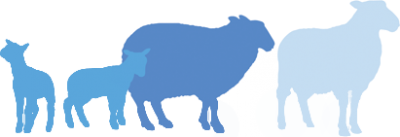
George's Liver Fluke Journal: Entry 6
17th December 2014
George Milne, NSA Scottish Region Development Officer, farms near St. Andrews on the east coast of Scotland. This is not a part of the world where fluke would be expected to cause major losses, but in the winter of 2012/13 that is exactly what happened. George has kindly let his farm be used as a fluke surveillance farm in a project funded by the Scottish Government and Novartis Animal Health, and supported by Moredun Research Institute, Scottish Rural College, University of Edinburgh , Parkside Vets and the National Sheep Association. The surveillance farm is part of the Scottish Fluke Action Group, a group representing many aspects of the Scottish sheep industry that aims to give real-time information to vets and farmers on managing fluke. Read previous instalments of the journal here: Entry One; Entry Two; Entry Three; Entry Four; Entry Five.
George’s Journal
It is hard to believe we are nearly at the end of the year and the weather is still so mild. It shows how unpredictable our seasons are now. We have had all sorts of weather since the end of August. September was so dry and then the rain came, with some snow on the hills in November then back to mild warm weather. If there was no fluke monitoring on the farm it would be hard to know when to treat.
The blood sampling of the lambs has carried on every month, and by November all but a couple of them were positive, so we know they have been infected by fluke this year. Six out of the 10 lambs also either had fluke eggs in their dung or were positive for fluke infection using the new copro-antigen test that measures a fluke protein in the dung. Some of the lambs may not yet be positive for eggs, as it takes eight to 10 weeks for the fluke to start laying eggs once it is inside the animal.
We have also been dung sampling the mothers of the lambs. During September the infection levels were low, but at the last sampling in early November we started to see more fluke eggs. Based on this result, coupled with the results from the lambs, it was decided that it was time to treat the animals. The sheep have been looking great so I want to make sure they stay that way!
The tests don’t tell me everything, as we can’t tell how many fluke are being picked up every week, but it does give me a good idea of what is going on. I would have traditionally treated the sheep much earlier than this and, this year, that would not have been the best time to maximise fluke kill and would have wasted my time and money.
The situation on my farm will be different from farms across the country so speak with your own vet or advisor on what will be best for you. I will be treating with closantel, as I know I have triclabendazole resistance on my farm. We will take a dung sample before and three weeks after to check the product is working properly. I can’t afford to get resistance to another fluke product so it is important to check now so, if I do have a problem, I will spot it straight away. When I treat in the spring my vets have advised me that I need to use a product other than closantel, as using one product all the time can help select for resistant fluke.
All the animals on the farm will be treated, then we will start monitoring the ewes again in a month to see what happens over the winter. The weather has been so mild and wet I don’t want to get caught out in the New Year.
Parkside Fluke Day November 2014
At the beginning of November I hosted a successful fluke farm walk. The event was organised by my vets, Parkside Vet Group in Dundee, and was for local famers to explain the work we have been doing here and how it could help them on their own farms.
We had about 12 people attend and the group was welcomed by Alistair Crozier from Parkside. Then myself and Fiona Anderson from Novartis Animal Health discussed the farm, fluke and the work that is being done on the fluke surveillance farm. We then had a farm walk and retired to the local pub to discuss fluke even more over a beer and haggis! The day went very well and was well received by the farmers. Fluke was never a big problem on the East Coast of Scotland until the last few years so everybody appreciated learning more about fluke and being able to discuss control on their farm.



